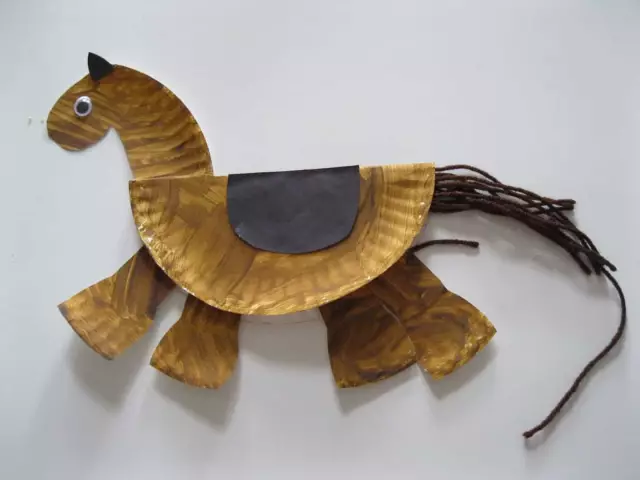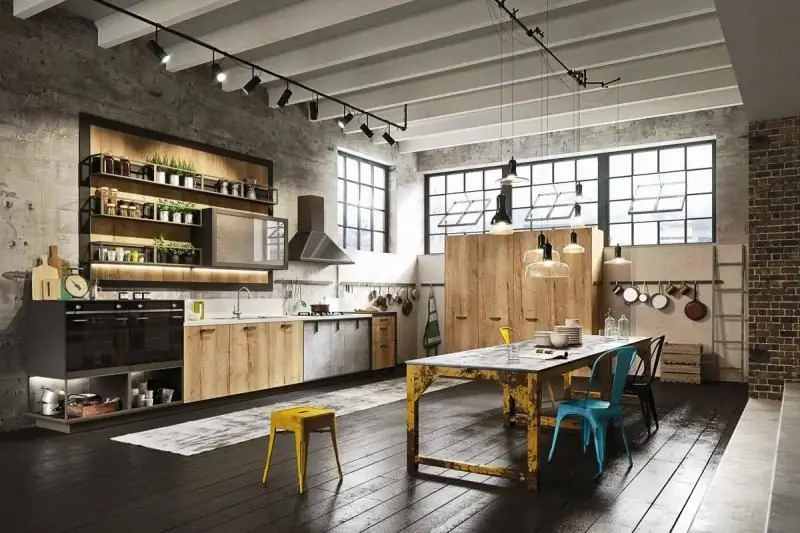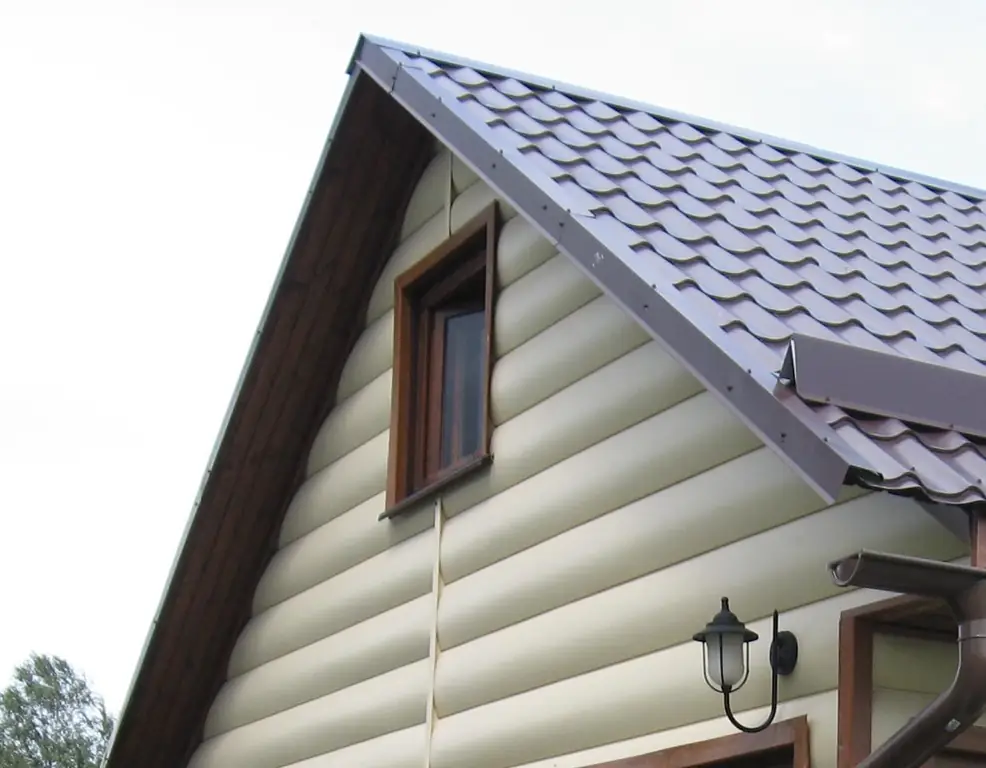
Table of contents:
- Author Bailey Albertson [email protected].
- Public 2023-12-17 12:53.
- Last modified 2025-06-01 07:32.
How to calculate the material for the fence - general design requirements and calculation of basic materials

The calculation of the parameters of the fence and the material for its manufacture is of great importance - in case of violation of building codes, the owner of the site, according to complaints from neighbors, can be fined. In addition, if gross violations were made during the design and installation of the fence, then such a fence must be demolished. Calculating the parameters is not as difficult as it seems at first glance.
Content
-
1 General criteria and rules
- 1.1 running meter
- 1.2 Dependence of the length of the fence on the area of the site
- 2 How to calculate the material for the fence
-
3 Brick
- 3.1 Picket fence
- 3.2 Decking
- 3.3 Polycarbonate
- 3.4 Mesh chain-link
- 4 Video on the topic: do-it-yourself fence made of corrugated board
General criteria and rules

The maximum permissible fence height should not exceed 2.2 meters
There is no separate normative act regulating the structure and parameters of the fence between the site in the Russian Federation. When designing a fence, you should adhere to SNiP, which was adopted by local authorities.
By mutual decision of the members of the dacha association, it is allowed to install solid fences from the side of the street and the carriageway up to 2.2 m high. These standards are established in order to maintain normal illumination of neighboring sections and the carriageway.
In practice, the height and material from which the fence is made do not fall under the state's standards. This is due to the following provisions:
- in this dacha association, other rules have been adopted that regulate the height and parameters of the fences;
- the owners of neighboring plots have agreed on mutually beneficial terms to build a fence of a different type and height;
- with an increase in the height of the fence, an indent was made from the border of the land plots in order to prevent shading;
- a high fence was installed without agreement with the members of the partnership.
The above requirements apply only to fences between summer cottages. For individual housing construction and subsidiary farming, these norms are valid only if they are described in the territorial rules and agreed with the regional administration. In other cases, fences of any type and height are allowed, if they do not violate the legal rights of the owner of the neighboring site.
Running meter

Upon agreement with local authorities, the height of the fence can be increased to 2.5-3 meters
The named value is a universal unit of measurement used when calculating a material or a long product. It is equal to one meter of material, regardless of its width and height.
Most often, the value is used when calculating the material for solid fences made of corrugated board, wood or polycarbonate. It should be noted that the height of the structure will not always be equal to the dimensions of the material used. Therefore, when buying, you should agree on the parameters of the material and the enclosing structure.
Dependence of the length of the fence on the area of the site
The length of the fence is equal to the perimeter of the site or the sum of its sides. The perimeter of the site directly depends on the shape - for two sites of the same area, but different shapes, the perimeter will be different.
| Land area | Width | Length, m. | Site perimeter, m. |
| 7 ares | twenty | 35 | 110 |
| 9 ares | 25 | 36 | 124 |
| 11 ares | 26 | 38.5 | 129 |
| 14 ares | thirty | 46.5 | 153 |
| 20 ares | 33 | 60.5 | 187 |
As an example, we calculate the length of the fence for a summer cottage with an area of 6 acres (600 m2), which can have a different shape:
- Square - a plot with sides of 24.5 m. The perimeter of the plot is: 24.5 * 4 = 98 m.
- Rectangle - a plot with sides 30 × 20 or 15 × 40 m. The perimeter of the plot will be: (30 + 20) * 2 = 100 m, (15 + 40) * 2 = 110 m.
- Trapezium - section 23.5x30x20x24.5 m. The perimeter of the section is: 23.5 + 30 + 20 + 24.5 = 98 m.
- Triangle - section 36x40x36 m. The perimeter of the section is: 36 + 40 + 36 = 112 m.
It can be seen from the calculations that the length of the structure for a section of a square shape will be the smallest, and for a triangular shape - the largest. A similar trend continues for plots with an area of 9, 11, 20 and more acres.
Before calculating building materials for the fence, it is recommended to find a cadastral plan of the site, in which the shape of the site is detailed in detail, indicating the length of each side. This will allow you to more accurately calculate the estimated length of the structure. Typical parameters and perimeter of plots of various sizes are indicated in the table above.
How to calculate the material for the fence

The process of laying a brick fence two bricks thick
Various materials are used for the manufacture of fences and fences. The most popular are brick, wooden board, imitation metal board, corrugated board, polycarbonate and netting.
The calculation is carried out immediately before its purchase and delivery to the place of work. Calculation operations can be performed in two ways: an online calculator and arithmetic formulas. We recommend using both methods. Manual calculation gives a more accurate and guaranteed result, and online programs allow you to verify the data and find an error, if any.
As an example, we will calculate the material for a rectangular plot with an area of 10 acres (1000 m2).
Brick

Parameters and number of bricks for laying support pillars
A brick fence is a monolithic structure consisting of support pillars and spans. It is being built on a pre-equipped concrete foundation.
For masonry, red, facing or frost-resistant bricks are used. The amount of bricks required depends on the design of the fence and the thickness of the masonry. On average, 100 bricks are needed for 1m2 of single masonry, and for the construction of one row of a support pillar of 1.5 bricks (380 × 380 mm) - 4 pcs.
Based on this, it is possible to calculate how much building material is required to erect a structure with a height of 2 m. As a material, we take a one-and-a-half smooth slotted brick measuring 250x120x88 mm.

Dependence of the type of masonry and the number of bricks during the construction of the fence
The sequence of calculations is as follows:
- Fence area - rectangular plot 25 × 40 m. Plot perimeter: (25 + 40) * 2 = 130 m. Maximum height area: 130 * 2.2 = 286 m2.
- Support post - height 2.2 m, thickness 380 mm. 4 bricks are required for laying one row. The total number of rows: 220 / 8.8 = 25. The total number of bricks per pillar: 25 * 4 = 100 pcs. Number of posts: 130/3 = 43 pcs.
- Span - height 2 m, length 3 m, thickness 166 mm. For laying of one row you will need: 300/25 = 12 pcs. The total number of rows: 200/12 = 22.7. The total number of bricks per span: 22.7 * 12 * 2 = 545 pcs. Number of spans: 130/3 = 43 pcs.
- The total number of bricks - 43 * 100 + 43 * 545 = 27735 pcs. For construction according to the above parameters, without taking into account the thickness of the mortar joints and the minimum height, a brick in the amount of 27,735 pieces is required.
The final result is an approximate value, but since the calculations did not take into account the height of the span, the size of the wicket and the gate, when purchasing, you do not need to make a surcharge for overruns.
To check the logic of the calculations, you should use the online program. As a result, it turned out that, according to more accurate data, a brick in the amount of 26400 pieces will be required, which corresponds to reality and confirms the logic of our calculations.
Fence

Wooden picket fence of various heights
A picket fence is a type of fencing structure with a vertically positioned wooden plank that is mounted on horizontal slats. There is a small gap between the board.
For the manufacture of such a fence, an ordinary planed and not planed wooden board made of pine or spruce is used. For a picket fence, a board of 20x100x3000 or 20x110x3000 mm is better. The thickness of the board varies from 20 to 25 mm.
To calculate the material for the fence, the standard formula is used: N = L / (S + d), where L is the length of the fence, S is the width of the board used, and d is the width of the gap between the vertical slats.
As an example, let's calculate the number of boards (20x100x3000 mm.) For a fence with a height of 1.5 m with gaps of 40 mm:
- The length of the fence is a rectangular section 25 × 40 m. The perimeter of the section: (25 + 40) * 2 = 130 m.
- The number of slats - 130 / (0.10 + 0.04) = 928.5 pcs. Number of boards in m. P: 928.5 * 1.5 = 1392.7 m. Number of boards: 1392.7 / 3 = 464 pcs.
- The number of cubes of the board - there are 168 boards in 1 m3 cube, taking into account our parameters. The result is: 464/168 = 2.8 m3.
For the construction of a fence made of a picket fence with a height of 1.5 m, 2.8 m3 of a planed board 20x100x3000 will be required, as well as 260 m of a board of 45 × 140 mm.
A similar formula and calculation logic is used to calculate the fence from the Euroshtaketnik. First, the perimeter of the fence is calculated. Further, the parameters of the euro-shtaketnik and the distance between the strips are determined. The data is then inserted into the formula.
Corrugated board

Diagram of a fence device from a profiled sheet with a height of 1.5 meters
Profiled sheet is a wall cladding material used for the construction of outdoor fences. Made of galvanized steel, coated with paint and polymer coating.
As an example, let's calculate the amount of profiled sheet with parameters 1200 × 2000 mm:
- The length of the fence is a rectangular plot of land 25 × 40 m. Plot perimeter: (25 + 40) * 2 = 130 m.
- Number of sheets - for a sheet with a width of 1200 mm, the useful width is 1150 mm. The number of sheets is equal to: 130 / 1.15 = 113 pcs.
Very often profiled sheet is sold in linear or square meters. Therefore, it is not always relevant to calculate the number of sheets. When choosing a corrugated board, specify its cost, taking into account the units of measurement, and only after that carry out the calculation.
Polycarbonate

Polycarbonate fence 2 meters high
Polycarbonate is a transparent material that is highly durable and reliable. Previously used only for the construction of floors and greenhouses. Nowadays very parts are used as material for fences. Available in sheets up to six meters long. Polycarbonate thickness varies from 6 to 12 mm.
Basically, manufacturers sell polycarbonate for fences at a price of 1 lm. When calculating, it is enough to calculate the perimeter of the site - this will be the amount required for the construction of a polycarbonate structure
For example, taking into account the examples described above, it turns out:
- Perimeter of the plot - allotment 25 × 40 m. The perimeter of the plot is: (25 + 40) * 2 = 130 m.
- Polycarbonate for a continuous fence - for the construction of a fence 2 meters high, 130 m of cellular polycarbonate, 260 m of steel corner, pipes 10 × 250 mm in the amount of 52 pieces are required.
It is recommended to add 10-15% to the value obtained, since polycarbonate, although a durable material, is not insured against damage during transportation and during installation.
Rabitz

The mesh netting is suitable for the construction of fences with a height of 1 to 2 meters
The netting netting is the most popular material for creating fences, temporary fences, aviaries, cages, etc. It is made of low-carbon steel wire. For the construction of fences for private housing, a chain-link with a galvanized coating is often used.
The chain-link mesh is produced in the form of rolls 10 m long. To calculate the required amount of mesh for the fence, you will need to calculate the perimeter of the site. Next, the perimeter must be divided by the length of one mesh. For example, taking into account our parameters, it turns out:
- The perimeter of the plot is a plot of 25 × 40 m. The perimeter of the plot is: (25 + 40) * 2 = 130 m.
- The number of mesh rolls the chain-link - 130/10 = 13 pcs.
In addition to the mesh itself, installation will require metal poles 10 × 2.5 meters, steel hooks in the amount of 5 pcs. 1 pillar. The pillars are buried in the ground every 2-2.5 m. For greater strength, the pillars are concreted with a cement-sand mixture before stretching the mesh.
Related video: DIY fence made of corrugated board
The calculation of the material for the fence is not a difficult task - it is enough to calculate the perimeter of the site. This will already be enough to estimate how much material will be required. For more accurate calculations, it is recommended to use the formulas and examples that were described above.
Recommended:
Which Epilator Is Better For Home Use - Laser And Other Types, For The Face And Bikini Area, Options For Sensitive Skin, Basic Parameters And User Reviews

Appointment and types of epilators. Description of the action of the devices. How to choose the best among them. What are the rules for caring for him. Reviews of the best brands
How To Make A Fence With Your Own Hands From Scrap Materials: Step-by-step Instructions For Making And Decorating From Plastic Bottles, Tires And Other Things, With Photos And Vide

How to make a hedge with your own hands. Choice of material, pros and cons. Required instructions and tools. Tips for finishing. Video and photo
DIY Fence Made Of Corrugated Board, Installation Of A Fence Made Of Corrugated Board

A fence made of corrugated board with your own hands on a personal plot. Step by step instructions on how to install a fence made of corrugated board with two types of pillars
The Interior Of The Kitchen And Living Room In A Loft Style In An Apartment And A Country House: Examples Of Design Design, Choice Of Color And Material, Decoration, Photo

The main features of the loft style and how to decorate the kitchen in such a design. The choice of materials, colors and textures for finishing. Loft-style lighting and decor for the kitchen
The Pediment Of The House And Its Types With A Description And Characteristics, As Well As How To Correctly Calculate And Mount

Description and characteristics of the pediment, its types. Calculation of the dimensions and materials of the gable wall. Device and installation features
